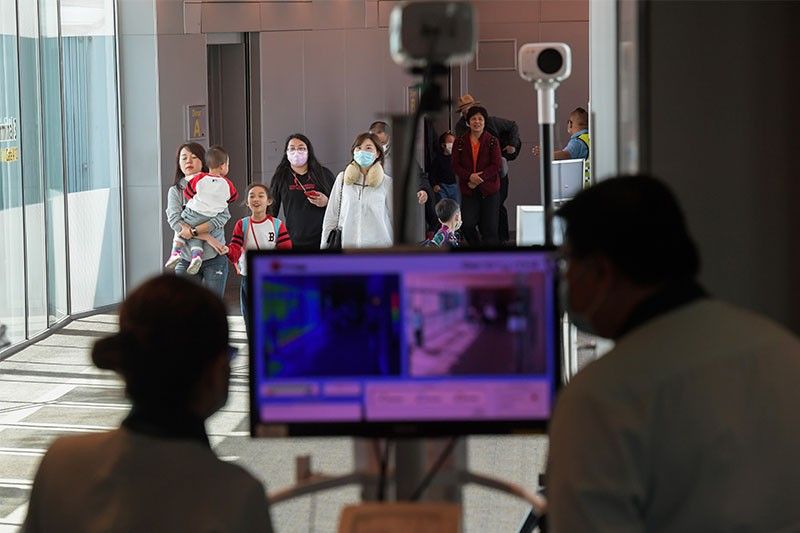What we know so far: The new coronavirus from China

BEIJING, China — A new SARS-like virus has killed 17 people in China, infected hundreds and reached as far as the United States, with fears mounting about its spread as hundreds of millions travel for Lunar New Year celebrations, which start Friday.
Many countries have stepped up screening of passengers from Wuhan, the Chinese city identified as the epicentre, which is home to 11 million people.
Here's what we know so far about the virus:
It's entirely new
The pathogen appears to be a never-before-seen strain of coronavirus -- a large family of viruses that can cause diseases ranging from the common cold to Severe Acute Respiratory Syndrome (SARS), which killed 349 people in mainland China and another 299 in Hong Kong between 2002 and 2003.
Arnaud Fontanet, head of the department of epidemiology at the Institut Pasteur in Paris, told AFP the current virus strain was 80 percent genetically identical to SARS.
China has already shared the genome sequencing of this novel coronavirus with the international scientific community.
It has been named "2019-nCoV".
It's being passed between humans
The WHO said Monday it believed an animal source was the "primary source" of the outbreak, and Wuhan authorities identified a seafood market as the centre of the epidemic.
But China has since confirmed that there was evidence the virus is now passing from person to person, without any contact with the now-closed market.
More than 500 cases of the virus have now been reported, with most in Wuhan, according to officials. Li Bin of China's National Health Commission on Wednesday said 1,394 people were still under medical observation.
Nathalie MacDermott of King's College London said it seems likely that the virus is spread through droplets in the air from sneezing or coughing.
Doctors at the University of Hong Kong published an initial paper on Tuesday modelling the spread of the virus which estimated that there have been about 1,343 cases in Wuhan -- similar to a projection of 1,700 last week by scientists at Imperial College, London.
Both are much higher than official figures.
It is milder than SARS
Compared with SARS, the symptoms appear to be less aggressive, and experts say the death toll is still relatively low.
However Antoine Flahault, director of the Institute of Global Health at the University of Geneva, told AFP that the fact that the virus seems milder in the majority of people is "paradoxically more worrying" as it allows people to travel further before their symptoms are detected.
The outbreak comes as China prepares for the Lunar New Year holiday, with hundreds of millions travelling across the country to see family.
International public health emergency?
The WHO on Wednesday postponed its decision on whether to declare a global public health emergency, extending talks by a day.
Cases have so far been confirmed in Thailand, Japan, Taiwan, South Korea, Macau and the United States.
The WHO has only used the rare label a handful of times, including during the H1N1 -- or swine flu -- pandemic of 2009 and the Ebola epidemic that devastated parts of West Africa from 2014 to 2016.
The Chinese government announced Tuesday it was classifying the outbreak in the same category as SARS, meaning compulsory isolation for those diagnosed with the disease and the potential to implement quarantine measures on travel.
Global precautions
As the number of confirmed deaths and infections has risen, so has concern worldwide about the disease spreading to other countries.
Authorities halted flights and trains from Thursday at 10:00 am out of Wuhan and told residents they should not leave without a special reason.
In Thailand, officials have introduced mandatory thermal scans of passengers arriving at airports in Bangkok, Chiang Mai, Phuket and Krabi from high-risk areas in China.
In Hong Kong, authorities have said they are on high alert, carrying out scans at the city's airport -- one of the world's busiest -- and at other international land and sea crossing points.
The United States had also ordered the screening of passengers arriving on direct or connecting flights from Wuhan, including at airports in New York, San Francisco and Los Angeles.
Taiwan has issued travel advisories, and went to its second-highest alert level for those travelling to or from Wuhan. Vietnam also ordered more border checks on its frontier with China.
In Europe, Britain and Italy introduced enhanced monitoring of flights from Wuhan, while Romania and Russia are also strengthening checks.
- Latest
- Trending































